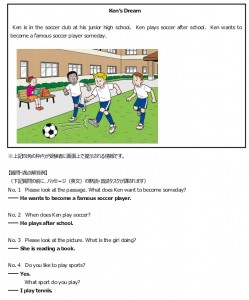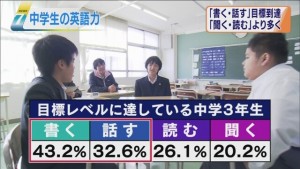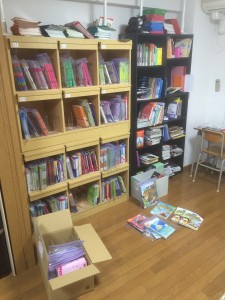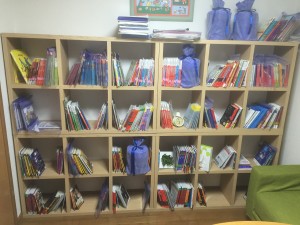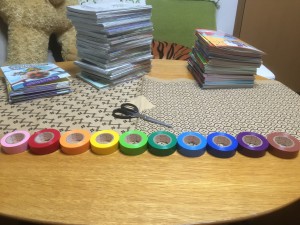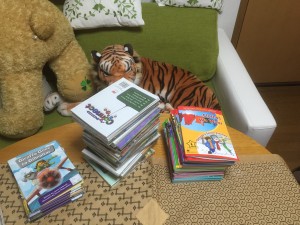PRESENTATION: Oxford Teaching Workshop Series in Sendai, February 14th
What else could you be doing on Valentine’s Day?
I’ll be presenting at the Oxford Teaching Workshop Series in Sendai this weekend, talking about reading programs for young learners. It’ll be a very practical, nuts and bolts type presentation.
10:30-11:20
Venue: TKP Garden City Sendai Hall C
“Many teachers are aware of the benefits of reading in English and would like to start reading programs for their students, but the practical difficulties seem too great. From budgeting to choosing books to planning and explaining class activities, this workshop will provide very specific advice for teachers who want to start or expand a reading program.”
More importantly though, my friend Yuko Suzuki will be talking about Shadoku (shadowing tadoku, or extensive reading) from 13:30. Anyone interested in the intersection between reading, speaking, and young learners should attend her workshop. She’ll be speaking in Japanese, but it’s worth making the effort to attend. I’m particularly pleased because I think I coined the term ‘shadoku’ over lunch at an ER event in Fukuoka. Glad to see Yuko running with it 🙂
STEP Eiken 4-kyu, 5-kyu Speaking Test from June 2016
Where are they going to find the interview testers???
I just read this press release/informational pamphlet on the STEP Eiken website (thanks for the tip, Mary!)
From June this year (ie the 2016-1 session of the STEP Eiken test) 5-kyu and 4-kyu will have a speaking test.
At first I was extremely surprised and wondered where they were going to find the interviewers to cope with these thousands of additional test, but then I read the content.
The new speaking tests will be online, can be done at any time, and will not affect whether students pass or fail the main STEP Eiken test. Instead students will receive an additional pass/fail certificate for the speaking test. I believe from the write-up that students will record their spoken answers and submit them via a website. Presumably Eiken will mark them using software, so it will be important to stick to the prescribed answer formats.
I’m guessing they will get those two annoying voice actors to do the audio (who is that woman, by the way? Sendai City got her to do the new subway line safety announcements, so now I have to listen to her every day rather than just for a couple of months a year…).
This is the content of the 4-kyu test.
And here is the 5-kyu.
As you can see (click on the graphics to make them bigger or just look at the original eiken version), they are both kind of watered down versions of the 3-kyu speaking test. Don’t know how they are going to guarantee the reliability of the test if students can take it at home with their parents or at school with their teachers, but I guess the stakes aren’t very high here and that’s why they decided to have it run parallel to (instead of be a part of) the paper test.
It’s probably a positive development and hopefully will put more emphasis on speaking skills for junior high school students. I don’t like that students have to read to answer the questions. It would be better to have them exclusively based on pictures and audio like the Cambridge YLE tests, but such is eiken 🙂
What do you think about the new speaking tests?
curriculum extensive listening extensive reading public policy
by sendaiben
4 comments
English Skills of Japanese Students
Business as Usual
Japan Times article. NHK puts a positive spin on the data. Less positive commentary.
Apart from unsurprised disappointment, my first reaction is to question what exactly the government thinks the equivalent of Eiken 3, pre-2, or 2 writing skills are that 40-odd percent of students have (given that these tests don’t have a writing section).
Is it that ridiculous ‘rearrange these words in the right order’ section? Because if they were using the words ‘writing skills’ in the form that the rest of the world understands, I think it would be a struggle for any Japanese junior and senior high school students to demonstrate proficiency.
I wrote about English education in Japan a couple of years ago in my ‘if I ruled the world’ series:
I don’t think a huge amount has changed since I wrote those. One thing that has changed for me is seeing how effective an extensive reading and listening course is. I will be doubling my efforts to get local schools to start their own programs -wish me luck.
curriculum extensive reading high school junior high school school management
by sendaiben
6 comments
Cambridge Academy: Year One
This is the third post about the Cambridge Academy, a private English program for junior and senior high school students. You can read the introductory post here, and the six-month update here.
The Academy started in April 2015, so this is the eleventh month of operation. It seems like a good point to review the year and talk about what we have learned since the last update.
The Good
There have been several positive developments. Best, and most important, of all is that our current students still seem to be enjoying their classes and reading well as far as I can tell. We have a range of outcomes depending on motivation, how often the students miss class, and ability, but even the least motivated students have read around 40,000 words this year. The students I mentioned in the last update who had run into problems now seem to be back on track.
We have figured out what to do with intermediate students. Once students go past YL 1.0 we class them as intermediate and give them more freedom to choose books. Up until 1.0 we do ‘guided ER’: class teachers give them their reading material and keep track of what they have read. Once they become intermediate they can choose their own books (teachers give advice until they get used to taking responsibility for their reading) within an appropriate level range.
Levels are now indicated with coloured vinyl tape. We use ten colours for beginner, and the same ten colours for intermediate and above, as follows:
Colour – Beginner YL – Intermediate+ YL
- Pink – 0.1 – 1.1-1.2
- Red – 0.2 – 1.3-1.4
- Orange -0.3 – 1.5-1.9
- Yellow -0.4 – 2.0-2.4
- Light Green – 0.5 – 2.5-2.9
- Green – 0.6 – 3.0-3.9
- Light Blue – 0.7 – 4.0-4.9
- Blue – 0.8 – 5.0-5.9
- Purple – 0.9 – 6.0-6.9
- Brown – 1.0 – 7.0+
The tape is easily available on Amazon or in stores. Putting it on books and ziplock bags is a bit of a pain, but it really helps teachers put beginner sets back in the right place quickly, and students find books at an appropriate level in the intermediate levels.
The reason I use tape and not stickers, despite the extra time it takes to measure and cut the tape, is that it is far more durable and pretty much doesn’t fall off (unlike the stickers).
We had some very good explanatory sessions with parents and students (sanshamendan) where we asked parents to come in for fifteen minutes and gave them a quick status report on how their child was doing. I was able to share their reading numbers and talk about what we do in class. This also gave parents a chance to ask questions or raise concerns, and a few of them did which meant we were able to set their minds at ease. We did the sessions over a number of weeks in November and December. I’m not sure if we will be able to continue doing them if student numbers grow, but will try to do something similar at least for all students in their first year.
We have bought a lot more books. We took delivery of about 1000 in January, and I am nowhere near caught up on labeling them and sorting out the audio. The good thing is that I think we’re probably okay for breadth at the beginner levels now. The next thing is to work on the intermediate levels, particularly on getting really appealing series of books, so that students can find something they like and read lots of similar content.
The Bad
Somewhat predictably, we are still finding it hard to recruit students from outside of Cambridge English, the parent English school. I was hoping to have grown the student body to around one hundred by the end of this first year, but instead we have seen slight attrition as students quit to focus on entry tests, move away, or get busy with other activities.
Student numbers fell by about 15% as current students decided they didn’t like the new system (fair enough as most of them were in normal eikaiwa classes when we unilaterally moved them to the new Academy format). We have another 10% or so who will graduate and go away to university. Somewhat making up for that, we have up to 40% who will come up from Cambridge English, and about 10% of new students who have booked trial lessons this month.
If all goes very well, we should end up with slightly more students than we had this time last year.
We weren’t able to redesign the website last year so that is a future project.
What happens next?
Well, the most urgent thing right now is to make sure the current students stay and as many prospective new students as possible join. We also need to tweak the program slightly to move writing practice into the ‘output’ classes and reduce the amount of formal homework students have. This year we found that most students did not do homework, which interfered with the smooth running of classes. Next year we will have no set homework but instead introduce lots of opportunities for language practice so that more motivated students can do it and the others don’t feel they have to.
I am really looking forward to seeing the students’ progress going forward. We have half a dozen now who are into our intermediate level, having read 300,000 words+. I am hoping that we (and they) will start seeing results in terms of their school studies and general English proficiency. This is where the program is going to live or die, and where our future students are going to come from. It will also make all the hard work worthwhile.
I imagine we will continue buying books too 🙂
2015 in Review, 2016 Preview
Last year was pretty good overall. Lots of progress on ongoing projects and some good foundations built for 2016. Here are some highlights:
- Received two important prizes from Tohoku University for my work on the extensive reading program.
- Really improved the extensive reading and discussion classes at Tohoku University. This was surprising, as I had considered them ‘finished’ and perfectly functional, but the upgrades just suggested themselves.
- Helped write the PDR Handbook, a guide to using discussion in classes with high school and university students (expect to hear a lot more about this as we get closer to publication date in March).
- Set up the Cambridge Academy and developed it.
- Gave my first workshops on personal finance. Much more on this on my website RetireJapan.
- Got my finances really sorted out.
- Took a family trip to Koh Samui (probably the last chance for us to get everyone together in one place).
My main goal for 2016 is to regain some work/life balance. I want to establish healthy sleeping, eating, and exercise habits. I want to schedule leisure and family time as well as work. I want to turn down most opportunities (even the ones I would have said yes to six months ago). I am mainly going to focus on:
- Developing my classes at Tohoku University. We have some new ‘advanced’ classes that are going to be interesting to experiment with. Most exciting for me is that I am going to run some classes for second years teaching personal finance in English.
- Write the 2nd edition of the ER@TU Handbook. Hoping to have this done by March. It is very overdue.
- Launch and develop a new website for teachers and learners of English called PELLT (Practical English Language Learning and Teaching). More on that once we have something to share.
- Learn how to use Camtasia and produce short videos for teachers and learners.
- Continue to develop the Cambridge Academy. I’ll have a post on the first year soon.
- Continue to develop RetireJapan. I am hoping to write some ebooks for the site this year.
With some luck and help from my friends (Dan E. in particular) I hope to get at least one of those done this year 😉
What does your 2016 look like?
